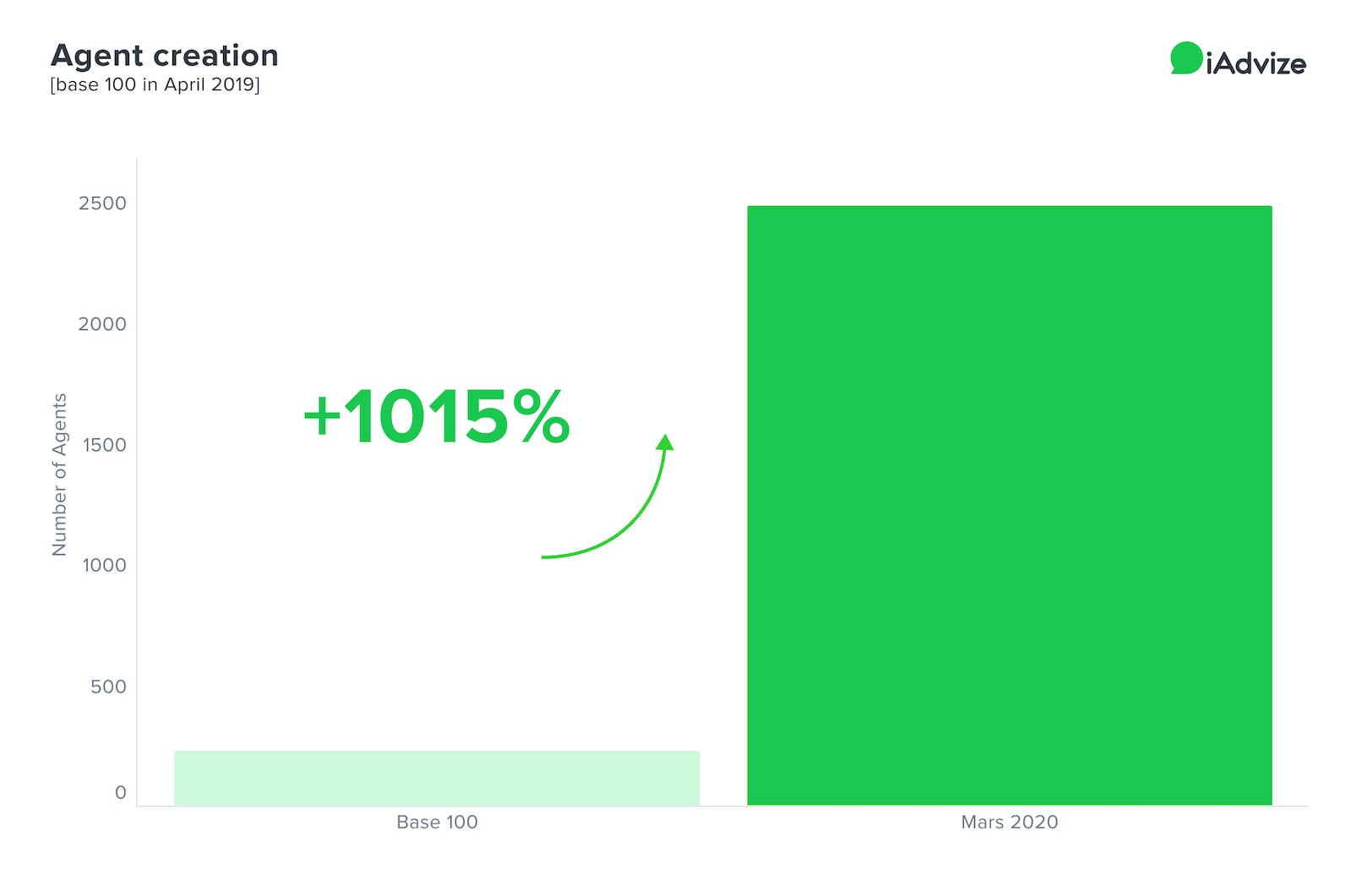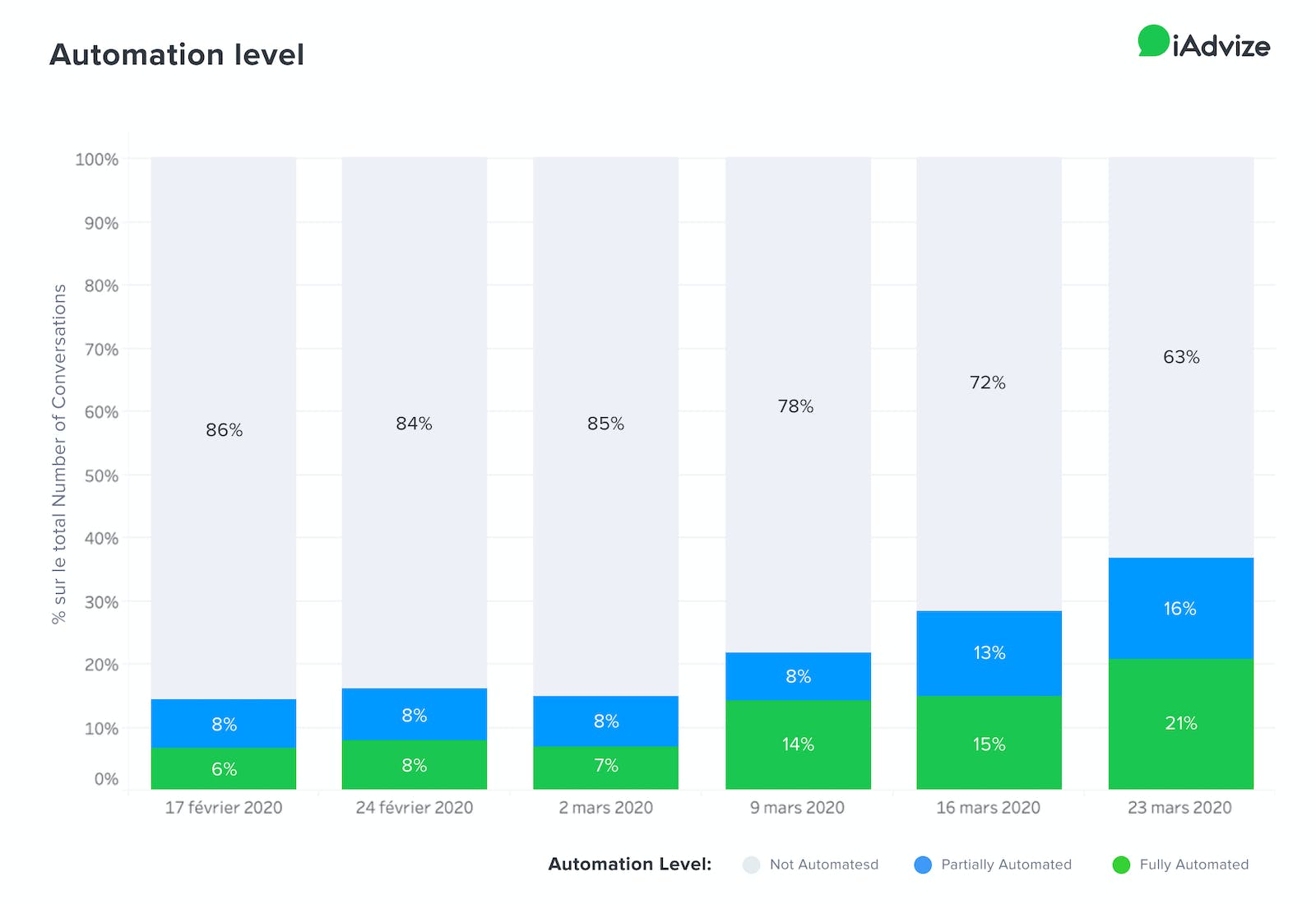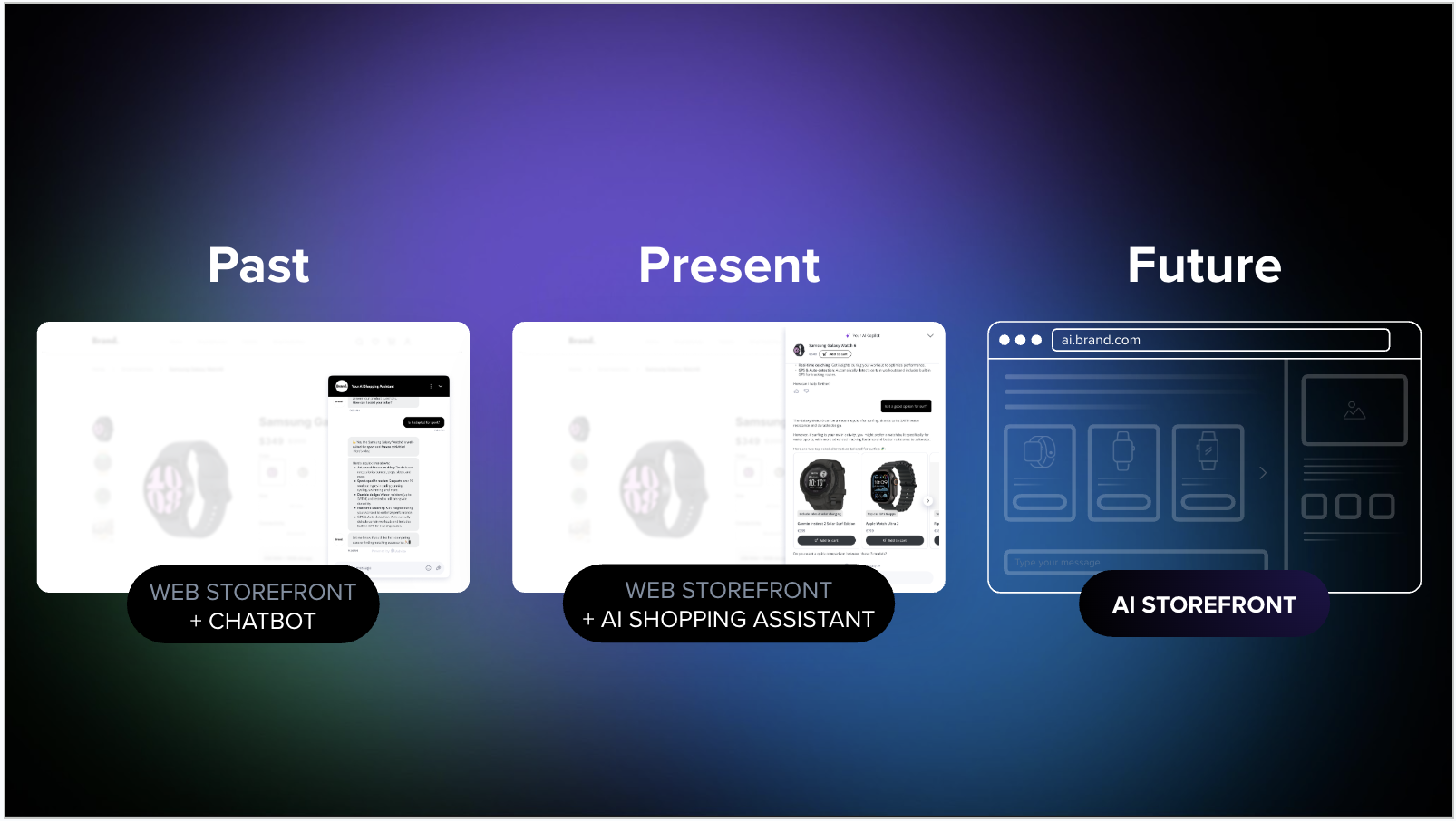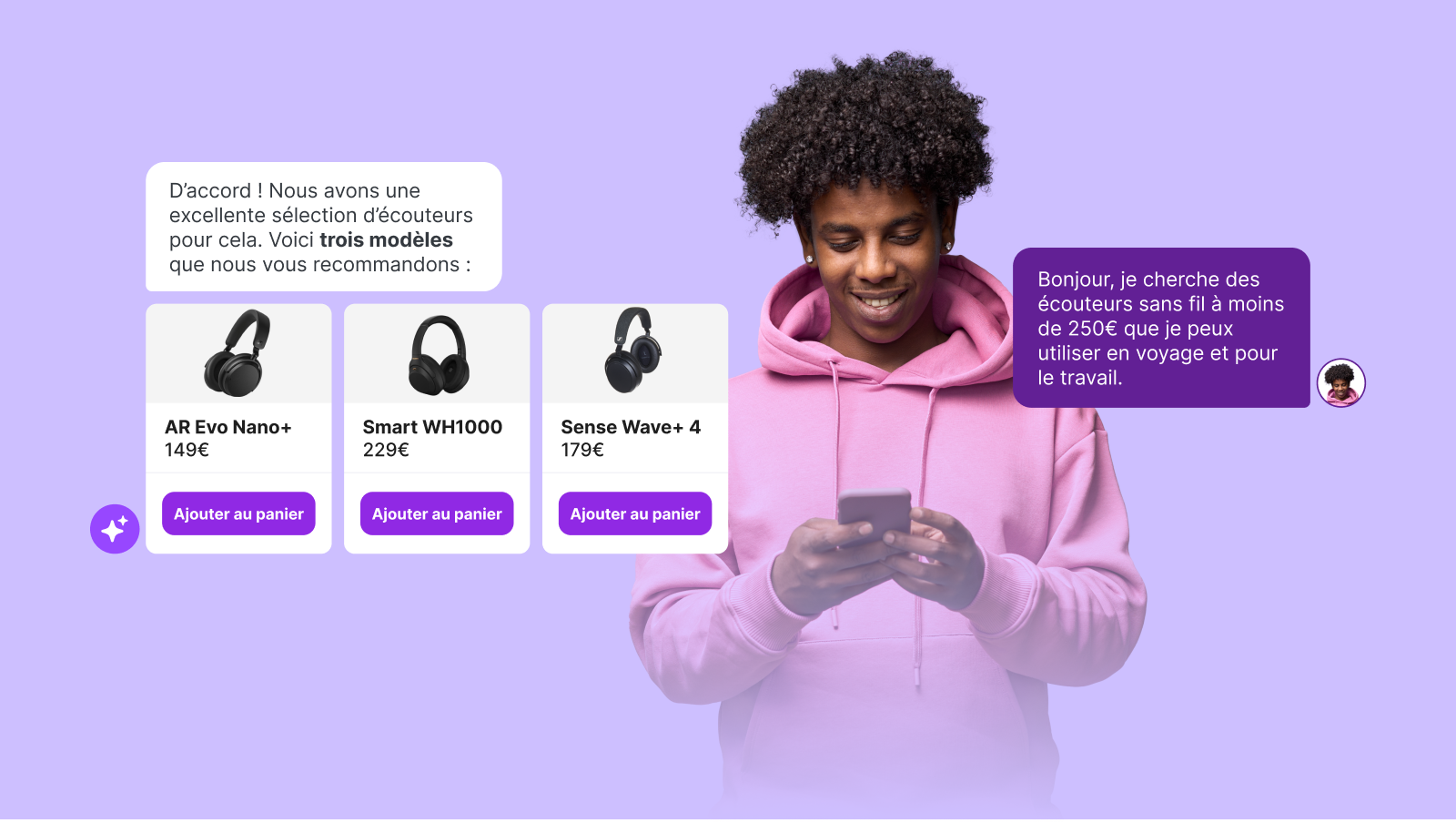How to facilitate remote teams by replacing calls with messaging?
iAdvize

Numerous businesses were encouraged to organize a remote structure to ensure the health and safety of their employees during the coronavirus. To maintain the continuity of their services, many turned toward messaging, an easily accessible solution for teams working at home. This strategy allowed our partners to maintain a high level of customer satisfaction. A study performed by Accenture on next-generation customer service showed that 70% of consumers prefer to contact customer service via messaging as opposed to by phone and 67% increased their use of messaging two-fold in recent years.*
1. One trend observed on our platform
We observed an overall increase in the number of messaging conversations held on the conversational platform since the beginning of the crisis, driven by the consumer products industry: +35% of conversations in the consumer products industry between the weeks of February 24th and the week of March 23rd, 2020 compared to a decrease in the travel and transportation sectors (-42%) and services (-12%).
This increase in the volume of conversations is explained in particular by a 15% increase in the click rate, specifically, the proportion of visitors who click on the chat button to benefit from online assistance. At the same time, from early March 2020, we noticed a significant increase in the number of representatives created on our platform.

2. Why are brands turning to online conversations?
From inaccessibility to specialized tools, to noisy kids playing in the background… making phone calls can be an impossible task for remote workers. As a solution, online conversations allow representatives to respond to queries from home, without interference.
In addition to the ease of working remotely, messaging has several advantages compared to telephone calls:
👉 The possibility of piloting multiple conversations simultaneously as a way of improving productivity
On average, professional representatives are allowed to conduct 2 chat conversations at the same time. For some of our clients, it’s as many as 6 simultaneous conversations.
👉 The possibility to automate responses to simple and frequent questions and to offer assistance at any time.
We have seen a significant increase in the proportion of conversations managed entirely by bots, from the very beginning of the crisis: these were multiplied by 3.5 (from 6% to 21%) between the week of February 17th and the week of March 23rd, 2020. The proportion of conversations pre-qualified by a bot doubled (from 8% to 16%). This trend was driven by both large international customers who have skillfully pushed the envelope on automation, and by large partners who deployed bots starting from mid-March, 2020.

👉 The opportunity to collect and analyze client messages
Our conversational platform generates thousands of interactions between brands and their customers. From the exchanges we tracked, we are able to extract themes and authenticate statistics to better understand customer concerns; one example being the topic of deliveries.
👉 Quick turnaround equals high customer satisfaction
We all know the frustration that comes with being stuck on the phone when the help desk puts you on hold. The use of online conversation gives the customer the freedom to focus on other tasks while contacting customer service. In addition, this solution offers relatively short wait times, as seen in our customer case studies. One client, Le Petit Vapoteur, showed an average response time of 15 seconds in the 3rd week of March, 2020 thanks to the deployment of 17 online representatives.
3.The expansion of messaging for remote working: Client case study – Le Petit Vapoteur
In response to the challenges posed to fight against COVID-19, one of our clients, Le Petit Vapoteur, took action: to better respond to the queries of their customers, they replaced telephone assistance with messaging and thus, put its representatives to work remotely. Watch this video to discover the strategy:
4. Other case studies
In the financial sector, one of our online banking clients decided to prioritize messaging to preserve the quality of the customer experience as it pertains to remote representatives. In the 3rd week of March, 2020, they deployed around 20 representatives online to treat clientele reassurance requests. The conversational platform is a SaaS solution, meaning that agents can easily access it from anywhere.
A pre-qualification chatbot was deployed to do two things: redirect visitors to the coronavirus information page, and transfer all specific questions to the dedicated representatives.
Results :
- The volume of treated conversations has multiplied by 6 since the 16th of March, 2020 as compared to the preceding weeks. The number of hours that representatives have dedicated to responding to queries has multiplied by 14.
- Client satisfaction after having a conversation increased despite the change of channel, it jumped by 2 points between the 4th and the 2nd week of March, 2020.
- The response time of the representatives remaind good, despite the high volume of requests, with a first response time of less than a minute.
In the business services sector, one of our French clients was forced to close its call centers due to the regulations imposed by the state in mid-March, 2020. Without missing a beat, they trained their sales representatives to handle pre-sales on the conversational platform. Nearly a dozen employees were thus deployed from their homes to respond to queries from the companies via messaging. Results :
- 26 representatives are connected to the platform to guide visitors, pre and post-sales, in the last week of March, 2020.
- Client satisfaction remained high and stable despite this change in strategy
- The volume of conversations multiplied by 4 between the beginning of March and the 3rd week in 2020.
- The first response time improved as it dropped down to less than 30 seconds in the 4th week.
*Accenture, Next generation customer service, 2019

.png)
.png)




